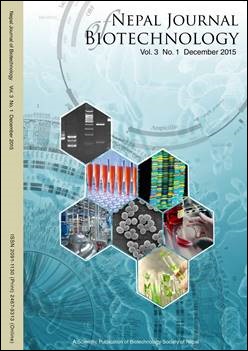Microbial Diversity in Freshwater and Marine Environment
DOI:
https://doi.org/10.3126/njb.v3i1.14236Keywords:
Ecology, Microorganisms, Nutrition, Water, PhototrophsAbstract
Water covers seven tenths of the Earth's surface and occupies an estimated total volume of 1,386,000,000 cubic kilometers (km3). Of all the water found on Earth, 97% is marine. Maximum of this water is at a temperature of 2 to 3°C and devoid of light; 62% is under high pressure (>100 atm). Microscopic phytoplankton and associated bacteria generate a complex food web that can extend over long distances and extreme depths. The marine environment looks so vast that it will not be able to be exaggerated by pollution; however, in coastal areas human activities are increasingly disrupting microbial processes and damaging water quality.
Nepal Journal of Biotechnology. Dec. 2015 Vol. 3, No. 1: 68-70
Downloads
Downloads
Published
How to Cite
Issue
Section
License
Copyright Notice:
The manuscript submitted to NJB must be an original contribution, not previously published and should not be under consideration for publication elsewhere. When the manuscript is accepted for publication, the authors agree to automatically transfer the copyright of the article to the publisher. It should grant permission to any third party, in advance and in perpetuity, the right to use, reproduce or disseminate your article, according to the NJB copyright and license agreement.
Authors transfer copyright to the publisher as part of a journal publishing agreement but have the rights to: Share their article for Personal Use, Internal Institutional Use and Scholarly Sharing purposes, with the NJB applies the Creative Commons Attribution-NonCommercial CC BY-NC license to all the works we publish after Jun 2020 (Before it was CC BY-NC-ND). Under this license, authors agree to make articles legally available for reuse, without permission or fees, for virtually any non-commercial purpose. Anyone may remix, adapt, and build upon your work non-commercially, and although their new works must also acknowledge you and be non-commercial, they don’t have to license their derivative works on the same terms. More details on CC BY-NC refer to its Licence Deed and Legal Code.






